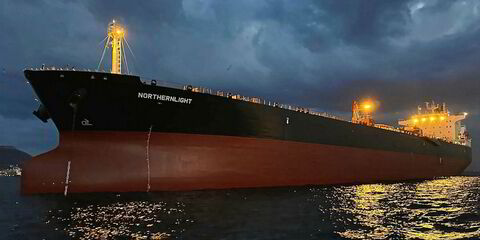Dynagas, GasLog and Golar will place a combined 14 vessels into “The cool pool”, according to a statement released today.
Dynagas executive Tony Lauritzen will take overall responsibility for the pool, with Morten Nielsen taking on the role of pool manager. Operations will begin in September.
The new partners believe the arrangement will bring improved scheduling and cost efficiencies and additional benefits from common marketing.
Each of the owners will keep chartering deals of more than 12 months separate.
Golar will place eight vessels into the pool, with Dynagas and GasLog contributing three each.
"All three owners have expressed enthusiasm for the benefits the pool is anticipated to deliver to charterers and participants alike," a statement said.
"The LNG Carrier Pool provides the opportunity to deliver benefits, including COAs and other contract forms not previously executed in LNG shipping.
"Importantly all three vessel owners are experienced LNG carrier operators with substantial track records offering potential charterers the best available level of safe and reliable ship management."
A positive development
The Cool Pool has been launched with rates for modern LNG carriers at around $30,000 per day, less than half the level seen a year ago, according to Clarksons Platou Securities.
Analyst Omar Nokta said: "We view this as a positive development for the LNG spot market, which remains very thinly traded.
"Shipowners operating in the spot market have faced very low rates (sub-$30,000/day) and poor utilization (~50-60%).
"This pool could go a long way in streamlining operations and allow for higher realized earnings for both the participants and the industry as a whole."
Sharing the pain
Erik Nikolai Stavseth of Arctic Securities says the pool is a sensible approach to addressing the lack of consolidation in the LNG market and a “pain sharing” mechanism in a poor market.
Stavseth calculates one third of spot trading LNG tonnage is involved in the new pool, with Golar seeing the most benefit among the new partners.
“We do not think the Cool Pool will be a panacea for neither of the three companies – nor the LNG spot market,” he said. “However, Golar LNG with nearly 60% of the vessels in the pool are likely to be the biggest beneficiary to any improvement seen.”
He also points to the crude tanker and capesize markets, which have seen major pools formed during depressed times over the past couple of years.
“It is in our view [it is] nearly impossible to address the impact of pool structures on spot rates, but the larger the proportion of spot vessels enters the pool – the bigger the impact should be,” he said.



